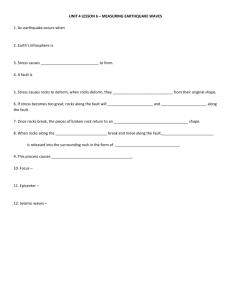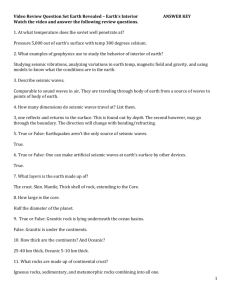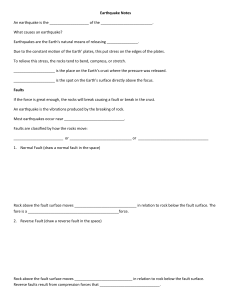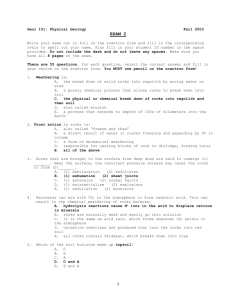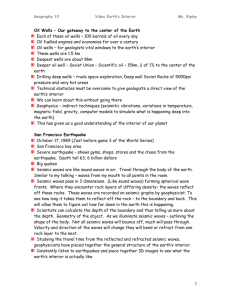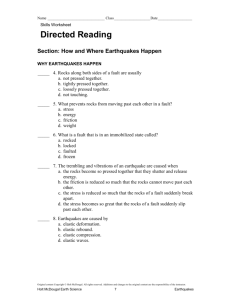Section 11.1 Notes - Forces Inside Earth Elastic Limit The limit to
advertisement
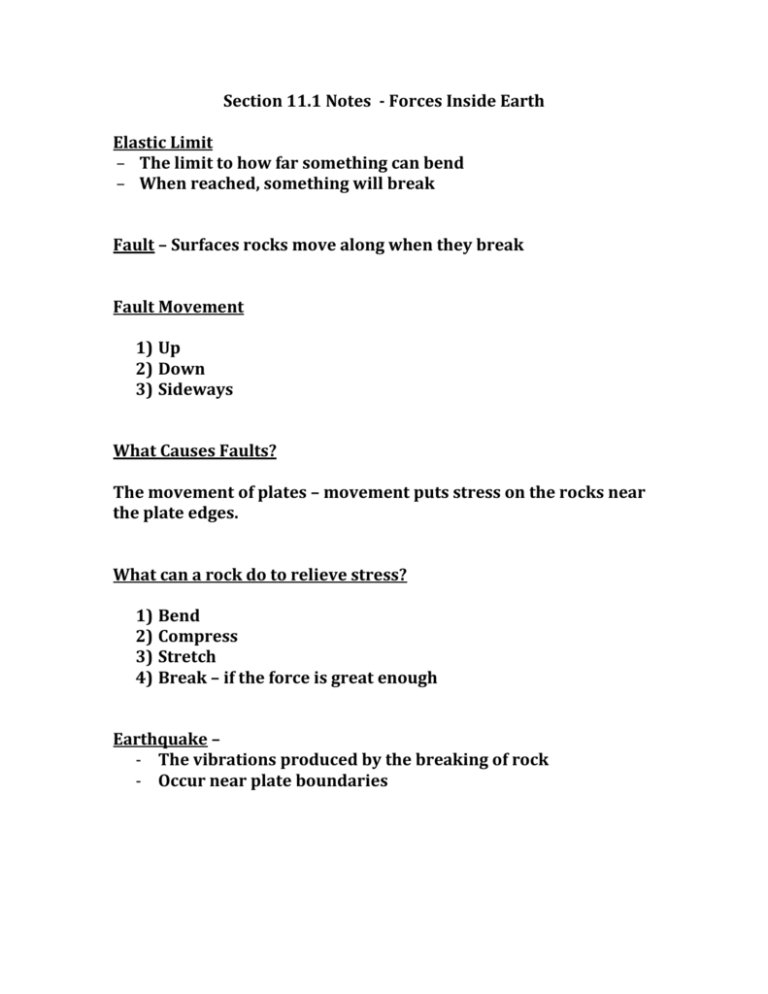
Section 11.1 Notes - Forces Inside Earth Elastic Limit – The limit to how far something can bend – When reached, something will break Fault – Surfaces rocks move along when they break Fault Movement 1) Up 2) Down 3) Sideways What Causes Faults? The movement of plates – movement puts stress on the rocks near the plate edges. What can a rock do to relieve stress? 1) Bend 2) Compress 3) Stretch 4) Break – if the force is great enough Earthquake – - The vibrations produced by the breaking of rock - Occur near plate boundaries How Earthquakes Occur - Forces drive rocks to move - Rocks bend and change shape - When the elastic limit is met, rocks break, move along the fault, and return to the original shape - Earthquake occurs Types of Forces Tension – pulls rocks apart Compression – squeezes rocks together Shearing – rocks slide past each other Normal Fault - Tension pulls rocks apart – divergent - Rock above the fault moves down in relation to rock below the fault Reverse Fault - Compression squeezes rock – convergent - Surface is pushed up and over the rock below Strike-Slip Fault - Rocks move past each other – transform - No up or down movement - Example – San Andreas Fault Section 11.2 – Features of Earthquakes Seismic Waves - waves generated by an earthquake Origin of Seismic Waves When the elastic limit is exceeded, energy is released in the form of seismic waves. Focus – - Point of energy release - Seismic waves travel out from here Types of Seismic Waves - Primary – P wave – fastest – causes particles in rocks to move in the same direction as the wave - Secondary – S wave – causes particles in the rocks to move at right angles to the direction of the wave - Surface – slowest – cause the most destruction – move particles in a backward, rolling and a side to side motion – travel out from the epicenter Epicenter – Point on Earth’s surface directly above the earthquake focus Speed of Waves 1) Primary 2) Secondary 3) Surface Seismograph – instrument that measures seismic waves and records the time they arrive Structure of Earth Mantle - largest layer - above outer core - made of Si, O, Mg and Fe - upper and lower mantle - Crust - outermost layer - helps make up the lithosphere - less dense than the mantle Shadow Zone – - An area on Earth between 105 degrees and 140 degrees from the earthquakes focus - No waves are detected here Waves and the Liquid Outer Core Secondary Waves – not transmitted through a liquid – stopped Primary Waves – slowed and bent, but not stopped ******* This creates the shadow zone!!*********** Moho Discontinuity – boundary between the crust and the upper mantle
